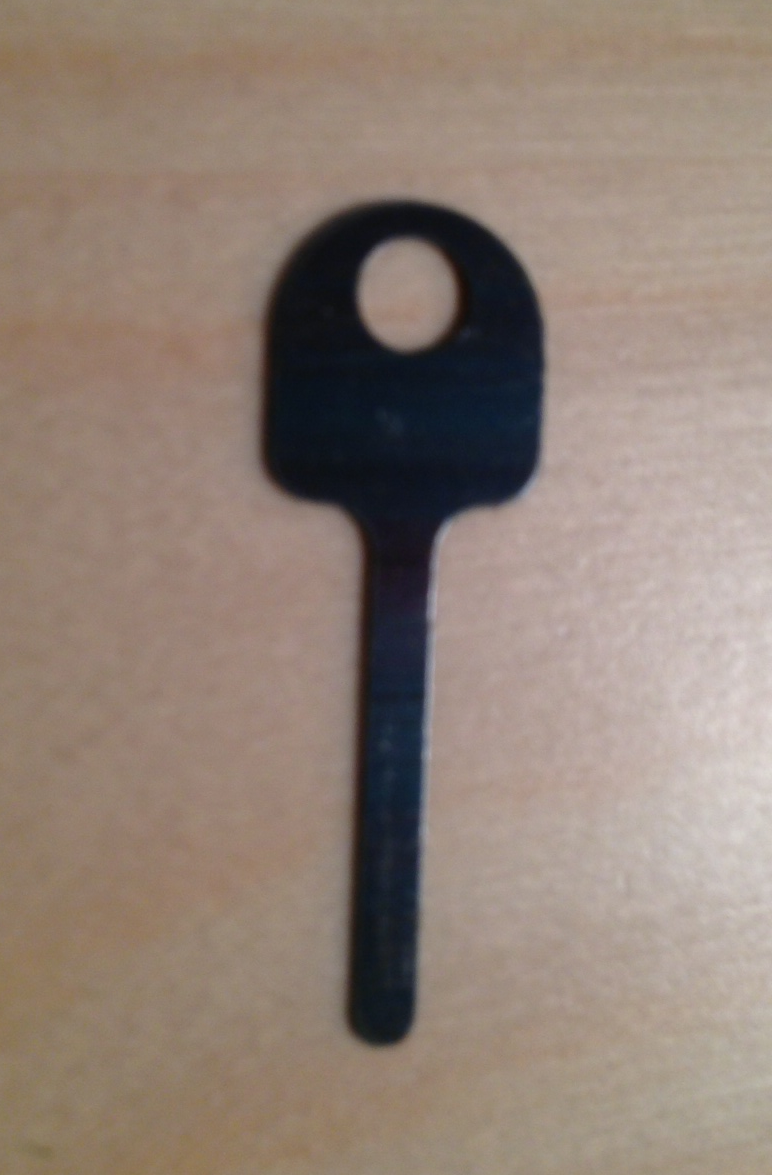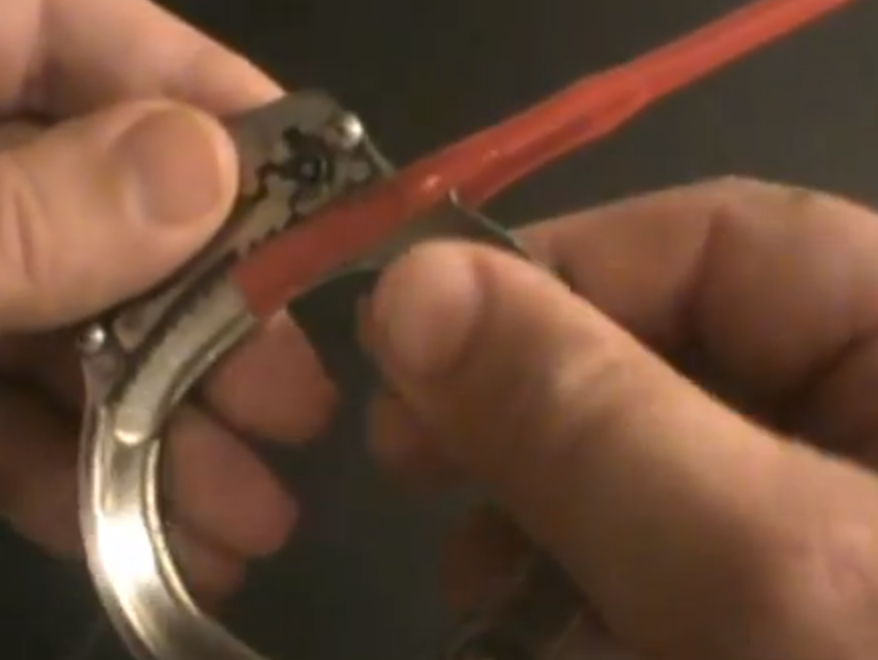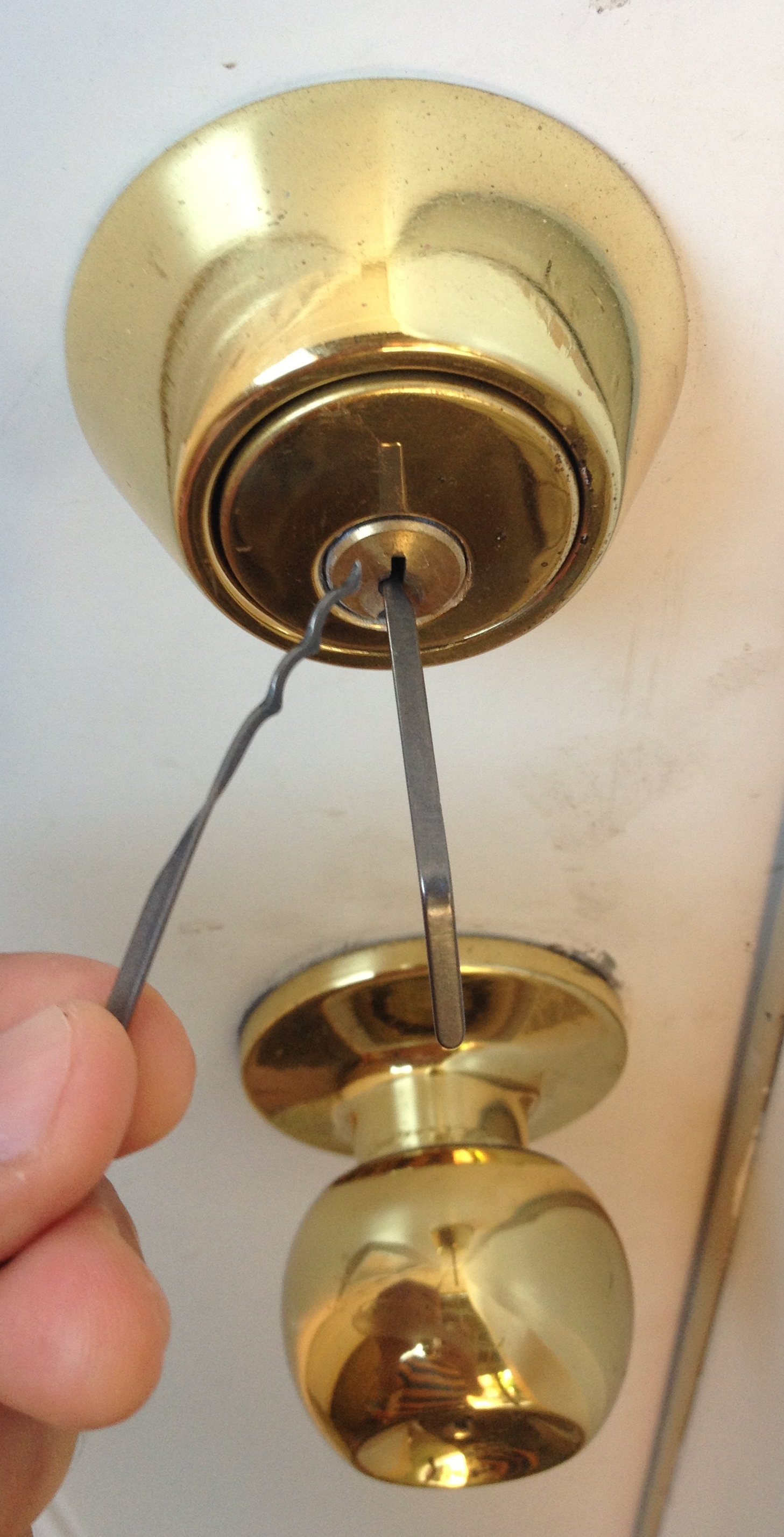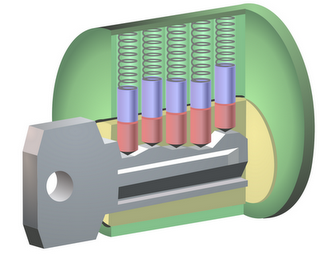Physical security can range from door to mobile locks such as padlocks and handcuffs. I have posted about picking door locks in the past HERE. My next project is researching breaking out of handcuffs. To do this, I have purchased a pair of double lock police grade steel handcuffs and researched how escape artists break out of them.
Common handcuffs work by moving a rounded ridged bar into a system that engages a ratchet with ridges that prevent the handcuffs from opening. The ridges permit moving the teeth in the closing direction via a downward slant however prevent moving back when the ridges are engaged. To open the handcuffs, a key pushes the ridges inside the handcuffs down to permit the ridged bar to slide back out.
Inside of common handcuffs – Notice inside ridges / teeth
There are a few methods that can open handcuffs without a key. The first method is picking the lock. How a key works is it turns inside the handcuff and pushes down the ridged area that makes contact with the ridged bar. Keys are universal since police officers need to move handcuffed individuals around without loosing track of who has the working key. You can use a paperclip, bobby pin or other metal object to act like a key by bending it a similar length of a standard handcuff key.
Bending a paperclip to open handcuffs
A easy method to use a paperclip is by opening the clip, sticking one end all the way into the lock and bending it long ways to make a short looking L. You can place the end part of the L inside the lock and turn it like it is a key rotating to push down the inside ridges. I found this method works pretty well however it’s a bit challenging when handcuff behind your back. The image shows a paperclip I used a few times that worked 90% of the time. I highly suggest using a think paperclip, as smaller ones are too weak to push down the ridges. With practice, this method works really well.
Showing how a paperclip can push down internal handcuff teeth
Another way to open handcuffs is through Shimming. This is the process of pushing down the ridges through the same entrance as the ridged bar. I have a few professional shims from a lock picking kit that work well. I also found a video of how to shim with a small straw. The concept is the object must be small and flat to follow the ridged bar into the handcuff. The object should interrupt the ridged bar from engaging the ridged inner handcuff to work. If the tool is short, you may have to push the handcuff bar in as far as your wrist will permit to have it make contact with all the internal ridges. This could get uncomfortable however I found this method more reliable. Especially when handcuffed behind my back.
 Shim key placed in handcuff to unlock cuffs
Shim key placed in handcuff to unlock cuffs
I highly suggest keeping a key around when trying out these methods. Also note, it is a felony in most areas to remove handcuffs when detained by authorities.









